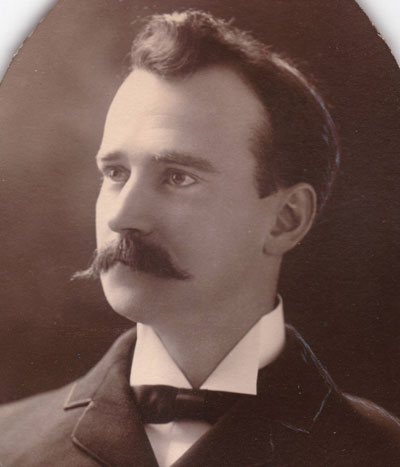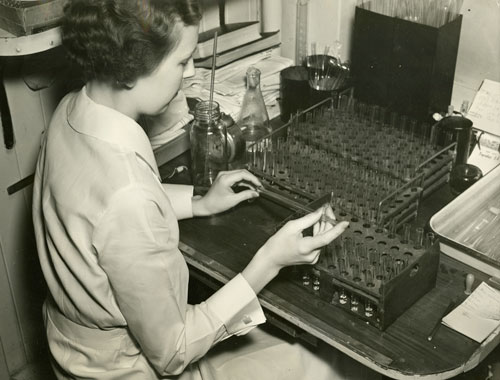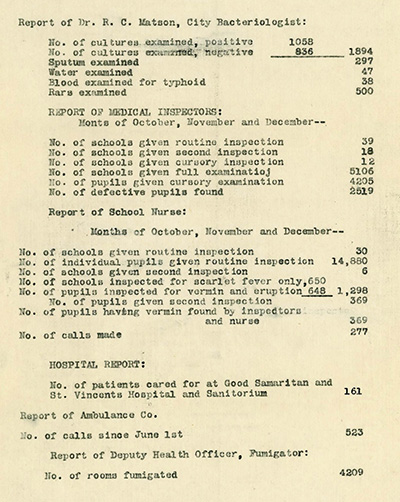Emergence of Public Health in the United States
"[Public health is] the science and art of preventing disease, prolonging life and promoting health through organized efforts and informed choices of society, organizations, public and private, communities and individuals.”
– Charles-Edward Amory Winslow, "The Untilled Field of Public Health," 1920
Defining Public Health, Data, and Statistics
Public health is concerned with threats to physical and mental conditions, based on population health analysis. The focus of public health intervention is to improve well-being and quality of life through prevention and treatment of disease and other physical and mental health conditions. Fields and subfields of public health include epidemiology, psychology, environmental health, behavioral health, and occupational safety and health.
Data and statistics are essential to public health, where knowledge of large populations is used to evaluate and reduce health threats. Broadly defined, data are facts collected together to use for research, reference, and analysis. In the field of statistics, numerical data is analyzed to make inferences about a large number of subjects. Historically, advances in the field of public health can be linked to increasing application of statistics and data analysis.
The Origins of Medical Statistics

Medical statistics emerged as a distinct discipline in the mid-nineteenth century. Physicians in Western Europe became interested in statistics earlier than their American counterparts. They began using statistical analysis in the 1820s to study social problems produced by the Industrial Revolution, a transition that Europe experienced earlier than the United States. Statistics were seen as tools to address epidemic diseases, crime, urban poverty, and other issues arising in industrial societies. In 1834 the Royal Statistical Society was organized in London. It became a global leader in the application of statistical analysis in public health.
Five years later the American Statistical Society was established in Boston by Lemuel Shattuck and Edward Jarvis, M.D. Shattuck, a school teacher and publisher, realized the potential of statistics in analyzing public health problems and, in turn, influencing sanitary reform. He was largely responsible for starting the Massachusetts system of vital statistics collection and registration, which became a model for other states. While physicians had been collecting some statistics, particularly related to diseases, for decades, it was the involvement of laymen like Shattuck that helped make statistics a profession.
Public health practitioners wanting to help large populations could make a greater impact if they used data and statistics to their advantage. Data that was formatted and structured into tables made it easier for the reader to absorb and analyze information shared by authors. It also made it easier for colleagues to share and re-use data, especially for those who agreed to collect and present data in similar ways.
Medical Discoveries
Medicine underwent a revolution during this time period, in large part because of the work accomplished by individuals in Europe. In 1854, the physician John Snow used statistics drawn from maps and mortality data to determine the source of a cholera outbreak in London, and convince local officials to improve the public water system. His work founded the modern field of epidemiology. Bacteriology emerged thanks to the work of physicians and scientists such as Joseph Lister, Louis Pasteur, and Robert Koch. By the 1880s, many of the organisms responsible for some of the deadliest diseases had been identified. It then became possible to discover how diseases spread and to develop vaccines to prevent epidemics. The bacteriology laboratory became an important public health institution at the turn of the century.
Bacteriology Laboratories

By the 1890s, bacteriology laboratories appeared in many cities across the country. Cortes H. Wheeler, M.D. established a city bacteriology laboratory in Portland in 1898. The Oregonian reported that the purposes of the laboratory included: “the culture and examination of disease germs, in order to establish the identity of such diseases as diphtheria, tuberculosis, typhoid, and cholera; to aid and assist in the examination of milk, meats, and other food supplies; and for such other work of a hygienic character as may at any time present itself to the board of health for the better maintenance of the health of the city.”
Albert E. Mackay, M.D. soon took charge of the municipal laboratory, having established such a facility at the University of Oregon Medical Department the previous decade. By the early twentieth century, Ralph C. Matson, M.D. was running the laboratory. He also oversaw the state laboratory and taught bacteriology at the medical school. When health inspectors identified potential cases of communicable diseases, such as diphtheria, cultures were sent to the city bacteriologist for examination, as shown in Dr. Matson’s 1908 report. If a culture was positive, the city placed a quarantine on the house of the infected and only lifted it when a new culture returned a negative result. The work of the bacteriologist informed the city public health officer’s reports, which included tables detailing cases of communicable diseases and causes of death.

Larsell, Olof, and Oregon Historical Society. The Doctor in Oregon; a Medical History. Portland, Or.: Pub. by Binfords & Mort for the Oregon Historical Society, 1947.
Office of the Board of Health, Portland. Annual Report. 1908.
Rosen, George. A History of Public Health. Revised Expanded ed. Baltimore: Johns Hopkins University Press, 2015.
Snow, John. Snow on Cholera, Being a Reprint of Two Papers. New York: Commonwealth Fund; London, Humphrey Milford, Oxford University Press, 1936.